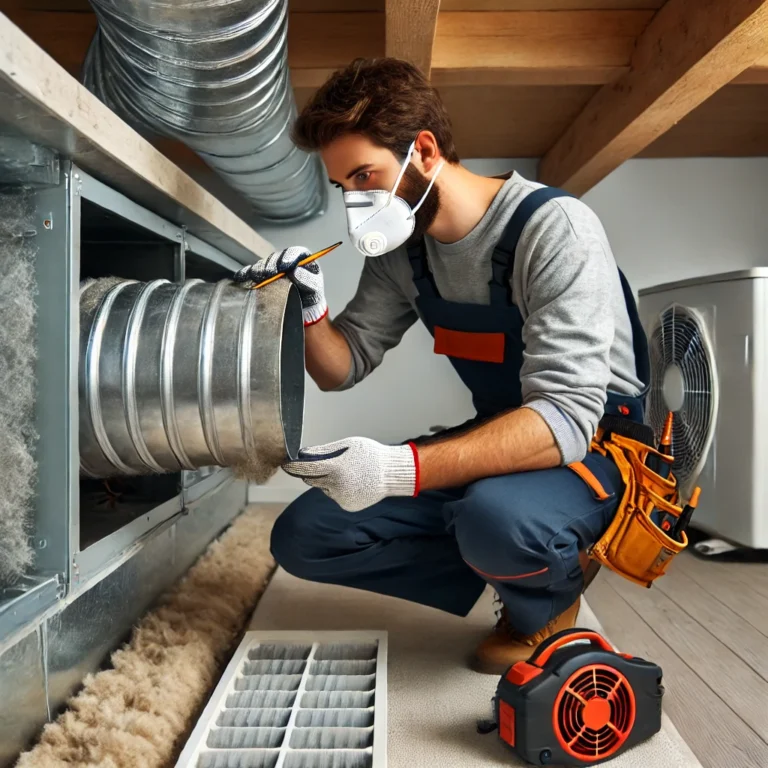HVAC Duct Cleaning
HVAC duct cleaning is the process of removing dust, debris, mold, and other contaminants from the air ducts, vents, and components of a heating, ventilation, and air conditioning (HVAC) system. Over time, dust, allergens, and microbial growth can accumulate in ductwork, reducing indoor air quality and affecting system efficiency.

Process of HVAC Duct Cleaning:
1. Inspection – A professional technician inspects the duct system to assess contamination levels and identify problem areas such as blockages or leaks.
2. Preparation – The technician seals off vents and creates access points to ensure a thorough cleaning process.
3. Vacuuming – High-powered vacuum equipment, such as truck-mounted or portable units, is used to remove loose dust and debris.
4. Brushing & Agitation – Specialized rotating brushes and compressed air tools are used to dislodge stubborn dirt, dust, and mold from duct surfaces.
5. Sanitization – Some cleaning services include antimicrobial treatments to eliminate bacteria, mold, and odors.
6. Final Inspection & Testing – The system is reassembled, and a final check ensures proper airflow and cleanliness.
Benefits of HVAC Duct Cleaning:
• Improved Air Quality – Removes dust, allergens, and pollutants, reducing respiratory issues.
• Enhanced System Efficiency – Clean ducts improve airflow, reducing energy consumption and extending the lifespan of the HVAC system.
• Odor Reduction – Eliminates musty or unpleasant smells caused by dust, mold, or bacteria.
• Lower Maintenance Costs – Prevents clogs and buildup that can lead to costly repairs.
How Often Should Ducts Be Cleaned?
Experts recommend HVAC duct cleaning every 3–5 years, but homes with pets, allergies, or high dust levels may require more frequent service. Commercial and industrial buildings should follow a maintenance schedule based on their usage and environmental factors.
